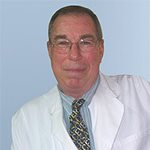לכל חסידי פרופ' די-בלה: הסיפור האמיתי
דיון מתוך פורום טיפולים משלימים בסרטן
Di Bella therapy was invented by Professor Luigi Di Bella, a retired physiologist from Modena, Italy. During 1997 AND 1998, Di Bella therapy caused an uproar throughout Italy when a judge in the southern city of Maglie ruled that the government must pay for Di Bella therapy to treat a 2-year-old boy with brain cancer. The childs parents had filed a lawsuit against the Italian Ministry of Health, which had refused to fund the treatment because Di Bella therapy was untested AND expensive. The young boy died in July 1998. A number of similar legal actions followed. Even though there was no scientific evidence to prove Di Bella therapys benefits, the therapy still had a number of supporters AND the Italian media quickly spread news about the professor's claims AND about the lawsuits. Di Bella appeared in 50 television interviews AND 300 newspaper articles. Demand for Di Bellas formula depleted the supply of some of its components in many pharmacies, AND people with cancer flooded Italian hospitals asking to take part in clinical trials. Thousands of supporters even held rallies in Rome to support government funding of Di Bella therapy. Finally, bowing to public pressure, the Ministry of Health ordered a controlled clinical study of Di Bella therapy. Some cancer specialists refused to participate for ethical reasons. The results of the clinical trial showed that Di Bella therapy was largely ineffective against cancer (see below). Di Bella claimed to have cured thousands of patients, but most of the records he kept did not allow for confirmation of this claim. There is evidence that some components of Di Bella therapy, such as melatonin AND somatostatin, may have some effect on cancer cells in the laboratory, but its not clear if they have the same effect in the human body. Bromocriptine, another component, is approved in the US for use along with conventional treatment to reduce the size of some pituitary tumors before surgery AND during radiation. Studies have not shown that combining these agents, as in Di Bella therapy, is effective in treating cancer, however. Italy's Health Ministry conducted a study in 26 medical centers involving nearly 400 patients with different forms of advanced cancers. The final report that included 395 patients showed that not one tumor went into complete remission (disappeared completely) AND only 3 (less than 1%) went into partial remission (shrank by at least half). Twenty-five percent of the subjects died AND the conditions of more than 50% worsened. The researchers concluded that Di Bella therapy did not deserve further clinical testing in patients with advanced cancer. Di Bella AND his supporters criticized this study for selecting patients with advanced disease AND for varying from his protocols. A study was also published on the survival rates of cancer patients treated by Di Bella during the years 1971 to 1997. A review of 248 of his records (the 16% of his patients for which good records were kept) showed that the treatment did not improve their survival, AND may have made it worse than similar patients getting standard treatment לקוח מאתר של ה AMERICAN CANCER SOCIETY
שיטת הטיפול של דיבלה כוללת שילוב של רטינואידים, מלטונין, ברומקריפטין וסומטוסטטין ביחד עם חומרים נוספים. יש testimonials של אלפי חולים המובאים במספר ספרים שפורסמו באיטלקית לגבי הצלחת הטיפולים. אני אישית באחד מביקורי באיטליה ראיתי בטלביזיה האיטלקית תוכנית מפורסמת מאד בשם porta a porta ובה הובאו מספר חולים שדיווחו על הצלחות מדהימות של שיטת דיבלה במחלתם. במחקר רטרוספקטיבי (Cancer. 1999 Nov 15;86(10):2143-9) מצאו ש 30% מהחולים שטיפל היו בחיים לאחר 5 שנים, זהו מספר פנטסטי בהתחשב שמרבית החולים מגיעים לטיפולים המשלימים לאחר שנכשלו בטיפול הקונבנציונלי ואז צפי החיים שלהם הוא של מספר חודשים בלבד. בהמשך נעשה מחקר פרוספקטיבי שהיה כולו biased, נערך בחופזה ותוצאותיו פורסמו במהירות כדי לבטל בעיני הציבור את הערך של הטיפולים בשיטת די-בלה. פרופ' דיבלה עצמו שהיה מעורב בתכנון המחקר, מיד עם תחילת המחקר, ראה כיצד הוא נערך ומשך את ידו ממנו מאחר והבין את כוונת עורכי המחקר. ולמרות כל הכוונות כנגד דיבלה עדין 12.5% מהחולים הגיבו לטיפול למרות שהם חולים שנכשלו כאמור במרבית הטיפולים הקודמים ולמעשה כל מי שנכנס למחקר זה היה חולה סופני. הכתבה המובאת באתר של האגודה לסרטן האמריקאית ACS היא חלק מהקמפין באתר זה כנגד הרפואה המשלימה. ד"ר יוסף ברנר www.sartan.co.il
די בלה נמצא בחברה טובה של מרפאי סרטן דגולים כמו: באדוויג, גרסון, רה ויצ'י, פאולינג, הוקסי, מוארמן, קלי, גונזלס, בורז'ינסקי, רייף, ראט, ורבים טובים אחרים... רובם נמצאו בעבר וחלקם נמצאים גם כיום ברשימה השחורה של ה-ACS ונרדפו שנים ע"י ה-FDA ומוסדות אחרים בארצם. התוצאות שהשיגו הנ"ל בחולי סרטן במצבים מתקדמים שמים בצל ומביישים את הממסד הרפואי ואת שיש לו להציע למחלה זו. גובי www.cure-cancer-naturally.com
אם טיפולים בבני אדם יתבססו על סיפורים מהטלויזיה האיטלקית. מילא, אילו טען פרופ' די -בלה כי הצליח לרפא עשרות חולים אולי אפשר היה להאמין לו. אבל כשהוא טוען, ואתה מחזק אותו, כי ריפא אלפי חולים זה כבר גולש לתיאטרון האבסורד. גם מידע המובא באתר זה חשוב שיהיה שקול ומבוקר, מבלי לעורר אשליות שווא בחולים. יש מקום לרפואה משלימה במניעת סרטן, ואולי גם בטיפולים מסויימים במחלה קיימת, עם ובלי טיפולים קונבנציונלים, אבל מכאן ועד לצ'יזבטים שעפים כאן לעיתים קרובות המרחק גדול. דרך אגב, מאין הבטחון שלך שאיני מטפל בסרטן? ואולי כן?

